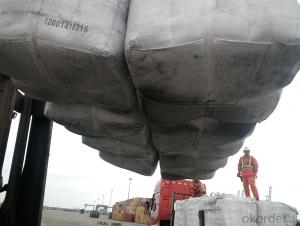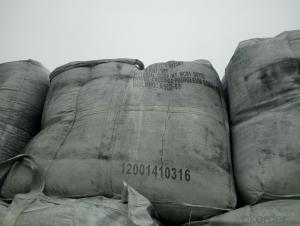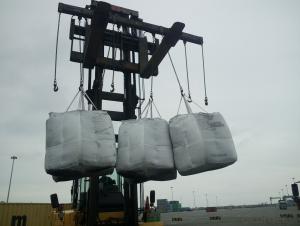Calcined Pitch Coke with Ash 0.5 percent for Steels
- Loading Port:
- Tianjin
- Payment Terms:
- TT OR LC
- Min Order Qty:
- 21 m.t.
- Supply Capability:
- 8000 m.t./month
OKorder Service Pledge
OKorder Financial Service
You Might Also Like
Introduction
Pitch Coke/Coal Tar Pitch is a kind of black brittleness and blocky piece, lustrously at normal temperature. It has special odour and poisonous and can be easily flame when melting, second-grade inflammable solid.
Pitch Coke/Coal Tar Pitch is obtained from powerfully processed coal tar. Compared to petroleum asphalt, the adhesiveness is better. Coal Tar Pitch is high quality tar production with high fixed carbon. It has excellent adhesion, waterproofing and resistance against seawater, oil and various chemicals. In these properties, it is much better than petroleum asphalt tar.
It can be used to produce painting, electrode, pitch coke, and tar felt. It also can be used as fuel and the raw material of asphalt carbon black.
Features:
The morphology, chemistry and crystallinity of recarburisers have a major impact on the overall casting cost. The combined application and cost benefits, which are derived through the use of Desulco, enable foundries to manufacture castings in a highly cost effective manner.
reduces
Recarburiser consumption
Power consumption
Inoculant consumption
MgFeSi consumption
Furnace refractory wear
Scrap rate
Tap to tap time
Slag inclusions risk
Chill
increases
Casting microstructure
Productivity
Process consistency
Carbon Recovery
Compared with calcined petroleum coke, acetylene coke and
graphite electrode scrap, Desulco yields the highest carbon
recovery and fastest dissolution time
Specifications:
CPC | |||
F.C.% | 98.5MIN | 98.5MIN | 98MIN |
ASH % | 0.8MAX | 0.8MAX | 1MAX |
V.M.% | 0.7 MAX | 0.7 MAX | 1 MAX |
SULFUR % | 0. 5MAX | 0. 7MAX | 1MAX |
MOISTURE % | 0.5MAX | 0.5MAX | 1MAX |
Pictures:

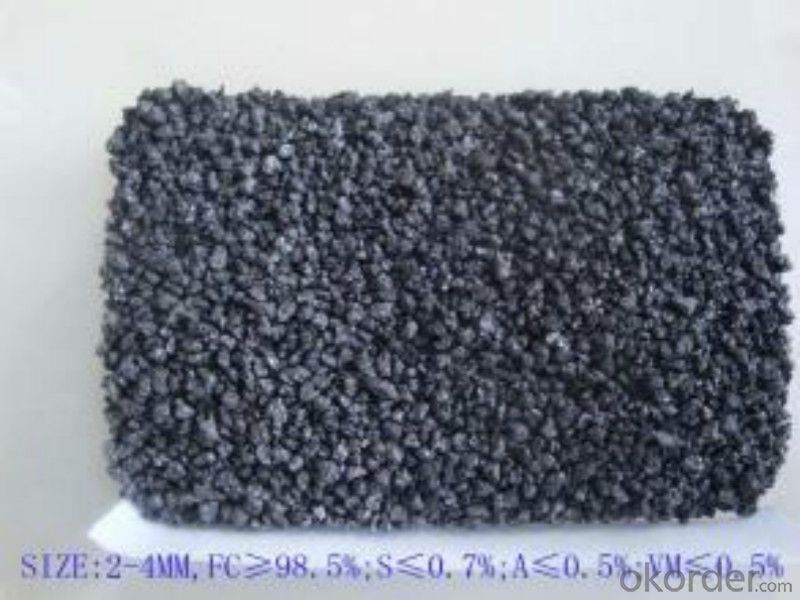

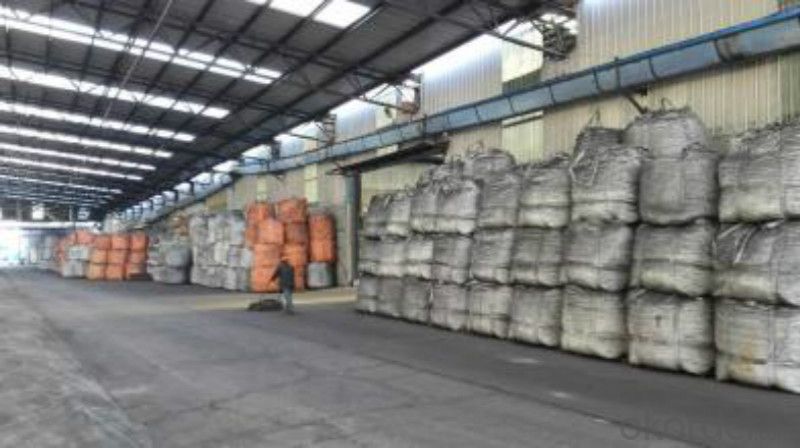
FAQ:
1.MOQ:2 Containers |
2.Size:1-3mm,1-5mm,2-6mm,3-5mm and as the customer's requirement |
3.Packing: 1 ton jumbo bag or 25kgs paper in bag |
4.Payment:T/T or L/C at sight |
5.Delivery time: within 15 days after receiving the deposit |
6.Usage: it is as carbon raiser,widely used in steelmaking,casting,casting iron,steel foundry,aluminum metallury. |
- Q: What are the sources of carbon emissions?
- Human activities, particularly the burning of fossil fuels like coal, oil, and natural gas, are the primary cause of carbon emissions. The largest contributor to carbon emissions is the utilization of fossil fuels for generating electricity, transportation, and various industrial processes. Power plants that utilize coal and natural gas play a significant role in emitting carbon, as do vehicles that run on gasoline and diesel. Besides, carbon emissions also result from industrial processes, mainly in sectors like cement production and steel manufacturing. These processes release carbon dioxide (CO2) during the chemical reactions involved in producing these materials. Deforestation and changes in land use are another significant source of carbon emissions. When forests are cleared, the carbon stored in trees is released into the atmosphere as CO2. Moreover, the loss of forests reduces the Earth's capacity to absorb CO2 through photosynthesis, worsening the situation. Agricultural activities, particularly livestock farming, contribute to carbon emissions through the release of methane (CH4) from animals' digestive systems and the decay of organic matter. The use of synthetic fertilizers in agriculture further adds to carbon emissions as they release nitrous oxide (N2O), a potent greenhouse gas. Other sources of carbon emissions include waste management practices, particularly the decomposition of organic waste in landfills, and specific industrial processes that release other greenhouse gases like hydrofluorocarbons (HFCs) and sulfur hexafluoride (SF6). It is crucial to note that although natural processes like volcanic eruptions and wildfires also release carbon dioxide into the atmosphere, their contribution is significantly smaller compared to human-induced emissions.
- Q: What are the environmental impacts of carbon emissions?
- Carbon emissions have a range of significant environmental impacts. One of the most pressing issues is the contribution to climate change. Carbon dioxide (CO2) is a greenhouse gas that traps heat in the Earth's atmosphere, leading to a rise in global temperatures. This increase in temperature has far-reaching consequences, including melting polar ice caps, rising sea levels, and more frequent and intense extreme weather events such as hurricanes, droughts, and floods. Another environmental impact of carbon emissions is ocean acidification. When CO2 is released into the atmosphere, a portion of it dissolves into the oceans, forming carbonic acid. This acidification disrupts the pH balance of the ocean, which is vital for the survival of marine life. It negatively affects the growth and development of coral reefs, shellfish, and other organisms that rely on calcium carbonate to build their shells or skeletons. Furthermore, carbon emissions contribute to air pollution. The burning of fossil fuels releases not only CO2 but also other pollutants such as nitrogen oxides (NOx), sulfur oxides (SOx), and particulate matter. These pollutants have detrimental effects on air quality, leading to respiratory problems, cardiovascular diseases, and other health issues for both humans and animals. Additionally, they contribute to the formation of smog and haze, reducing visibility and further degrading air quality. Carbon emissions also have indirect impacts on ecosystems. The alteration of climate patterns can disrupt ecosystems and affect the distribution and behavior of various species. This can lead to changes in the migration patterns of birds, the timing of plant flowering, and the availability of food sources. These disruptions can have cascading effects on entire ecosystems, potentially leading to the extinction of certain species or the invasion of non-native species. Lastly, carbon emissions contribute to the depletion of natural resources. The extraction and burning of fossil fuels for energy production not only release carbon dioxide but also require the destruction of habitats and ecosystems. This includes mining for coal, drilling for oil, and deforestation for palm oil plantations or grazing lands. These activities result in the loss of biodiversity, destruction of habitats, and soil erosion, further exacerbating environmental degradation. In conclusion, the environmental impacts of carbon emissions are diverse and far-reaching. They include climate change, ocean acidification, air pollution, disruption of ecosystems, and the depletion of natural resources. Addressing these impacts requires a concerted effort to reduce carbon emissions and transition towards cleaner and more sustainable energy sources.
- Q: How does carbon impact the availability of clean transportation?
- The contribution of carbon to greenhouse gas emissions affects the availability of clean transportation. Carbon dioxide (CO2) is a significant greenhouse gas that is responsible for climate change. When fossil fuels are burned in traditional transportation systems, they release large amounts of CO2 into the atmosphere. As a result, there is an urgent need for cleaner alternatives in the transportation sector. Clean transportation options, such as electric vehicles (EVs) and hydrogen fuel cell vehicles, have been designed to minimize carbon emissions. These vehicles use electricity or hydrogen as their primary source of energy, resulting in zero tailpipe emissions. This greatly reduces the carbon footprint associated with transportation. However, the availability and adoption of these clean transportation solutions are directly influenced by carbon-related factors. One important factor is the energy infrastructure required to support clean transportation. Electric vehicles, for instance, depend on charging stations and a reliable power grid. It is crucial to produce clean electricity from renewable sources like solar and wind to ensure that EVs are truly emission-free. Therefore, the carbon intensity of the electricity grid plays a crucial role in determining the environmental impact of electric transportation. Moreover, the availability of carbon-neutral fuels is another significant aspect. Hydrogen fuel cell vehicles, which use hydrogen to generate electricity, require a readily available and sustainable source of hydrogen. Currently, most hydrogen is produced from natural gas, which emits CO2 during the production process. However, advancements in technologies like electrolysis, which uses renewable electricity to produce hydrogen, are making way for carbon-free hydrogen production. Additionally, carbon pricing and policies also influence the availability of clean transportation. Governments and organizations incentivize the adoption of low-carbon transportation options by placing a price on carbon emissions. This can lead to increased investments in clean transportation infrastructure, research, and development, ultimately making clean transportation solutions more available and affordable. In conclusion, the emissions of carbon from traditional transportation systems have necessitated the development and availability of clean transportation alternatives. Factors such as energy infrastructure, availability of carbon-neutral fuels, and supportive policies all impact the availability and accessibility of clean transportation. By addressing carbon impacts, we can expedite the transition to a more sustainable and environmentally-friendly transportation system.
- Q: How can carbon capture and storage be implemented?
- Carbon capture and storage (CCS) is a technology that involves capturing carbon dioxide (CO2) emissions from industrial processes and storing them underground, preventing their release into the atmosphere. Implementing CCS involves several key steps. Firstly, the capture process involves capturing CO2 emissions from power plants, factories, and other industrial sources. This can be achieved through various methods, such as pre-combustion capture, post-combustion capture, and oxy-fuel combustion. Pre-combustion capture involves converting fossil fuels into a mixture of hydrogen and CO2, with the latter separated and stored. Post-combustion capture involves removing CO2 from the flue gases after combustion. Oxy-fuel combustion involves burning fossil fuels in pure oxygen, resulting in a flue gas that is mostly CO2. Once captured, the second step is transportation. The captured CO2 needs to be transported from the capture site to a storage site. This transportation can be done through pipelines, ships, or trucks, depending on the distance and volume of CO2. Pipelines are the most common method, especially for large-scale projects, as they are cost-effective and efficient. The third step is storage, which involves injecting the captured CO2 deep underground into geological formations for long-term storage. The most suitable storage sites are depleted oil and gas fields, saline aquifers, and deep coal seams. These sites have the capacity to securely store large amounts of CO2 for hundreds or even thousands of years. To ensure the safety and effectiveness of CCS, monitoring and verification play a crucial role. Continuous monitoring is required to detect any potential leaks or seismic activities that may compromise the integrity of the storage site. Verification activities involve assessing the long-term storage of CO2 and ensuring compliance with regulations and standards. Implementing CCS also requires policy support and financial incentives. Governments can provide regulatory frameworks, tax incentives, and funding to encourage the adoption of CCS technologies. International cooperation and collaboration are also important, as CCS can be a global solution to mitigate climate change. In conclusion, implementing carbon capture and storage involves capturing CO2 emissions, transporting them to a storage site, injecting them underground, and monitoring the storage process. It requires various technologies, infrastructure, and policy support to achieve widespread adoption. By effectively implementing CCS, we can significantly reduce greenhouse gas emissions and combat climate change.
- Q: What is carbon nanocomposite coating?
- Carbon nanocomposite coating is a thin layer of material that contains carbon nanoparticles, which are dispersed within a polymer matrix. This coating is known for its exceptional strength, durability, and electrical conductivity, making it useful in various industries such as aerospace, automotive, and electronics.
- Q: What is the most common isotope of carbon?
- The most common isotope of carbon is carbon-12.
- Q: How does carbon affect the properties of steel?
- Carbon affects the properties of steel by increasing its hardness, strength, and overall durability. The presence of carbon allows for the formation of iron carbides, which strengthen the steel's crystal lattice structure. The higher the carbon content, the harder and stronger the steel becomes. However, excessive carbon can make the steel brittle, reducing its impact resistance.
- Q: What is carbon pricing?
- Carbon pricing refers to a policy mechanism that aims to reduce greenhouse gas emissions by assigning a monetary value to carbon dioxide and other greenhouse gas emissions. It essentially puts a price on the carbon content of fossil fuels and other activities that release greenhouse gases into the atmosphere. The main objective of carbon pricing is to incentivize businesses, industries, and individuals to reduce their carbon emissions by making it more economically viable to adopt cleaner and more sustainable practices. There are two primary methods of carbon pricing: carbon taxes and cap-and-trade systems. A carbon tax sets a fixed price per ton of carbon emissions, which businesses and industries must pay based on their emissions levels. This tax creates a financial incentive for companies to reduce their emissions to avoid higher costs. On the other hand, cap-and-trade systems set a limit, or cap, on the total amount of emissions allowed in a given period. Companies are then allocated a certain number of emissions permits, which they can buy, sell, or trade with other companies. This system creates a market for emissions, where companies that can reduce their emissions more easily can sell their surplus permits to those struggling to meet their targets. The revenue generated from carbon pricing can be used in various ways. It can be reinvested into renewable energy projects, energy efficiency initiatives, or research and development of clean technologies. It can also be used to support vulnerable communities affected by the transition to a low-carbon economy or to offset the economic impacts on industries that may face challenges in reducing their emissions. Carbon pricing is considered an effective tool for tackling climate change, as it provides a clear economic signal to businesses and individuals to reduce their carbon footprint. By placing a price on carbon, it internalizes the costs associated with climate change and encourages the adoption of cleaner alternatives. It also helps to level the playing field between polluting industries and those investing in low-carbon technologies, creating an incentive for innovation and the development of sustainable practices.
- Q: What's the difference between carbon steel pipes and stainless steel pipes and seamless steel tubes?
- Call is a weld seam steel tube, so that you understand it!
- Q: What is the melting point of carbon?
- The melting point of carbon depends on the form in which it is found. Pure carbon exists in multiple forms, including graphite and diamond. Graphite has a high melting point of around 3,600 degrees Celsius (6,500 degrees Fahrenheit), while diamond has an even higher melting point of approximately 3,827 degrees Celsius (6,920 degrees Fahrenheit). These high melting points are a result of the strong covalent bonds between carbon atoms in these structures. However, it is important to note that carbon can also exist in amorphous forms, such as coal or charcoal, which do not have a specific melting point as they undergo a gradual decomposition process when heated.
Send your message to us
Calcined Pitch Coke with Ash 0.5 percent for Steels
- Loading Port:
- Tianjin
- Payment Terms:
- TT OR LC
- Min Order Qty:
- 21 m.t.
- Supply Capability:
- 8000 m.t./month
OKorder Service Pledge
OKorder Financial Service
Similar products
Hot products
Hot Searches
















